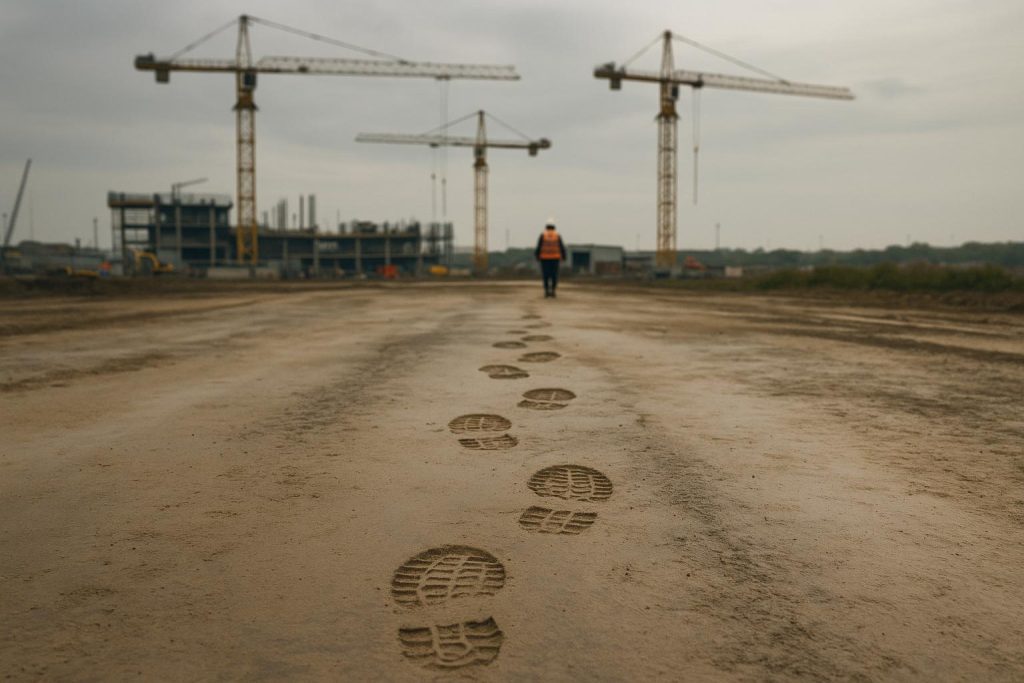Despite an 8% decline in project starts and a 30% drop in main contract awards, regional disparities and government-led projects highlight pockets of growth in the UK’s community and amenities sector this year, with defence investment offering potential upside.
The UK community and amenity construction sector faced a notable decline in activity during the three months leading to July 2025, with project starts falling by 8% year-on-year and main contract awards plunging 30% compared to the previous year. Detailed planning approvals experienced an even more significant drop of 65% relative to 2024. These trends reflect a sector under pressure, with no major projects exceeding £100 million either awarded or approved during this period. However, smaller projects under £100 million showed some resilience, with growth recorded in both project starts and contract awards compared to last year. Earlier momentum had been sparked by the government’s £2.3 billion investment in prison construction, although the sector cooled off in the mid-year quarter. Looking ahead, increased defence funding is anticipated to provide a medium-term boost to construction activity in this segment.
Despite the overall downturn, several sub-sectors bucked the negative trend. Government buildings, for instance, represented the largest proportion of project starts at 34%, buoyed by an impressive 247% increase. Local facilities, while slightly down by 2% year-on-year, still accounted for £153 million worth of projects. Meanwhile, prisons saw a sharp decline, accounting for just £117 million in starts—a 73% decrease from the previous year.
Regionally, the picture was more varied, with the majority of areas experiencing growth in both project starts and detailed planning approvals despite the sector’s overall slump. The East of England, North West, and West Midlands stood out with strong growth in these metrics, while the North East and South East saw significant increases in project approvals. London led project starts by a wide margin, growing more than eightfold to reach £223 million, driven largely by the £110 million Victoria Tower Fabric Safety Project in Westminster. The North West also registered substantial growth, with a 128% increase in project starts to total £92 million. In terms of approvals, the South East dominated with 34% of the total, bolstered by 186% growth year-on-year, amounting to £56 million. The North West followed with a 45% rise to £40 million. Conversely, the East Midlands struggled significantly, with approvals plunging 96% to just £12 million.
Wider industry analysis from Glenigan highlights that construction project starts in the UK had already been under strain earlier in 2025, with a 21% year-on-year decline reported in the first quarter. This downturn was largely attributed to economic uncertainty and growing concerns over international trade tariffs, reflecting broader market pressures. Yet, there are tentative signs of recovery; detailed planning approvals rose by 8% in the first quarter compared to the previous quarter, suggesting the development pipeline could strengthen later in the year and into 2026. The divergence between sluggish project starts and improving planning approvals indicates that while immediate construction activity remains subdued, the groundwork for future projects is beginning to solidify.
This nuanced picture of the UK construction industry underscores a sector navigating multiple headwinds, including economic challenges, regional disparities, and shifting government investment priorities. While community and amenity constructions have contracted in many respects, pockets of growth, particularly in government-led projects and certain regions, offer cautious optimism. The anticipated rise in defence spending further signals potential areas of expansion, which could help stabilise and eventually drive an upturn in construction activity in this vital sector.
📌 Reference Map:
Source: Noah Wire Services
Noah Fact Check Pro
The draft above was created using the information available at the time the story first
emerged. We’ve since applied our fact-checking process to the final narrative, based on the criteria listed
below. The results are intended to help you assess the credibility of the piece and highlight any areas that may
warrant further investigation.
Freshness check
Score:
7
Notes:
The narrative presents recent data up to July 2025, indicating a decline in the UK community and amenity construction sector. However, similar trends have been reported in earlier Glenigan Indexes, such as the one ending in June 2025, which noted a 6% decline in community and amenity project starts compared to the preceding three months. ([glenigan.com](https://www.glenigan.com/glenigan-index-of-construction-starts-to-end-of-may-2025/?utm_source=openai)) The report’s freshness is moderate due to the recurrence of similar findings in recent publications.
Quotes check
Score:
8
Notes:
The narrative includes direct quotes from Glenigan’s Economic Director, Allan Wilen, regarding the construction sector’s performance. These quotes are consistent with those found in Glenigan’s previous reports, such as the one ending in June 2025. ([glenigan.com](https://www.glenigan.com/glenigan-index-of-construction-starts-to-end-of-may-2025/?utm_source=openai)) The repetition of these quotes suggests the content may be recycled, affecting originality.
Source reliability
Score:
9
Notes:
The narrative references reputable sources, including Glenigan and Construction News, which are known for their industry insights. However, the reliance on a single source for the majority of the data raises concerns about the diversity of information. The Construction News article from June 2025 provides detailed sector analyses, supporting the report’s credibility. ([constructionnews.co.uk](https://www.constructionnews.co.uk/cn-intelligence/uk-construction-activity-may-2025-east-of-england-25-06-2025/?utm_source=openai))
Plausability check
Score:
7
Notes:
The narrative’s claims about the decline in the community and amenity construction sector align with recent data from Glenigan’s Indexes, such as the one ending in June 2025, which reported a 6% decline in project starts for this sector. ([glenigan.com](https://www.glenigan.com/glenigan-index-of-construction-starts-to-end-of-may-2025/?utm_source=openai)) The inclusion of specific figures and references to government investments adds credibility. However, the lack of new information or perspectives suggests the content may be recycled, affecting its originality.
Overall assessment
Verdict (FAIL, OPEN, PASS): FAIL
Confidence (LOW, MEDIUM, HIGH): MEDIUM
Summary:
The narrative presents recycled content with moderate freshness and originality. While it references reputable sources and aligns with recent data, the repetition of quotes and reliance on a single source for the majority of the information raise concerns about its credibility. The lack of new insights or perspectives further diminishes its value.





